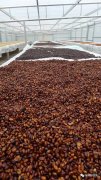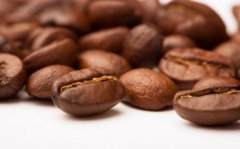Map of Coffee World (Preface)

For professional baristas, please follow the coffee workshop (Wechat official account cafe_style)
In the past, people believed that the earth was flat: the world had an end, and if he sailed there, he would fall into the abyss with the waterfall. This set of ideas is intermingled with superstition, religion and fantasy. It was not until the scientific knowledge matured that people gradually accepted that they had lived on the sphere for generations.
Overthrow the perception that coffee is bitter
"Coffee is bitter" has also been an "established cognition" since human beings learned to eat (drink) and use this red fruit. What has happened is all "bitter": including the initial accidental discovery that the roasted core is more fragrant than the flesh (charred bitterness). And coffee shops in the Middle Ages were coarsely ground and concocted with boiling water (bitterness of over-extraction), and instant coffee (bitterness of inferior materials) was produced in mass production after the Industrial Revolution. Coffee is bitter, as reasonable as "the earth is flat".
The rise of the boutique coffee movement has overturned the traditional perception of these hundreds of years.
People who do not understand gravity will be afraid that they will fall when they are "under" the earth, and those who taste fine coffee for the first time will regard the acidity in the coffee as a nightmare.
The history of the spread of coffee records the footprints of coffee trees from the ancient forests of Ethiopia traveling around the world: it took root in the Red Sea of North Vietnam and took root for the first time in Arabia (now Yemen). Later, it spread eastward to India, and later aroused the curiosity of travelers and aristocrats in Western Europe. After the Crusades and the subsequent imperialist invasion and colonization in the southern hemisphere, Portugal, France and the Netherlands conspired to obtain coffee seeds and planted them near the equatorial belt for their citizens to enjoy, and so on. During this long journey, seeds from one root experienced genetic mutations or deliberately grafted by farmers, resulting in a number of new varieties of Arabica coffee (C. Arabica).
Starting from the producing areas of cutting bean seeds
When it came to coffee a few decades ago, Sandox and Wantning were the most respected. On the coffee map, Brazil and Java were colonies of Portugal and the Netherlands, respectively. In terms of planting environment, the two places are not favorable. And coffee varieties are mainly high-yielding energy. It may be because it is popular, or because the standards of examination at that time are different from those in modern times: "bitter but sweet" and "bitter but sweet" are respected because of their sweet fragrance, but they still cannot dispel the haze of "suffering". Although the two countries are still major exporters of coffee in the world. But from time to time, the world has changed, and the highest quality coffee has returned to the source from the "colonial planting factory", the final stop in the history of proliferation. In a series of articles, the author will try to draw a map of the coffee world in terms of producing areas, bean varieties and planting environment.
For those who come into contact with boutique coffee for the first time, we will distinguish the state of origin by acidity and taste. Those who don't want to take risks can be compared with instant coffee through a cup of hand-brewed Brazilian coffee: the former is extracted by scientific standards, at least without the bitterness caused by shoddy materials and improper baking. After adaptation, you can go forward to the fragrant fruit acid. In terms of producing areas, you can say: "Asia tastes thick, South America is like nuts, China and America are as sweet as honey, and African fruits are fragrant."
Patrick Tam (owner of the boutique coffee shop Knockbox, approved barista of the American Fine Coffee Association and European Fine Coffee Association, CQI recognized cup tester, Cup of Excellence's first Hong Kong judge)
Important Notice :
前街咖啡 FrontStreet Coffee has moved to new addredd:
FrontStreet Coffee Address: 315,Donghua East Road,GuangZhou
Tel:020 38364473
- Prev

Talking about Coffee: travel Notes of Coffee Farm published
For professional baristas, please follow the coffee workshop (Wechat official account cafe_style) God bless you, Patrick. Luis, the owner of Niagara's God-given Manor, is a devout Catholic, which can be seen in his words and deeds and his kindness to workers during his several days with him. He blessed the author because I announced on facebook that I would donate 50% of the proceeds from the sale of travel books to 1.
- Next

World Map of Coffee-- Origin, Development, Flavor and Variety of Brazilian Coffee
Communication of professional baristas Please follow the coffee workshop (official Wechat account cafe_style) when it comes to Brazil's Santos, in addition to the football team, I believe many people will think of coffee. Santos is a port in southeastern Brazil. In the past, the name of the port was printed on the export of coffee (generic coffee) from different provinces, but unknown importers promoted Sandushi as
Related
- Does Rose Summer choose Blue, Green or Red? Detailed explanation of Rose Summer Coffee plots and Classification in Panamanian Jade Manor
- What is the difference between the origin, producing area, processing plant, cooperative and manor of coffee beans?
- How fine does the espresso powder fit? how to grind the espresso?
- Sca coffee roasting degree color card coffee roasting degree 8 roasting color values what do you mean?
- The practice of lattes: how to make lattes at home
- Introduction to Indonesian Fine Coffee beans-- Java Coffee producing area of Indonesian Arabica Coffee
- How much will the flavor of light and medium roasted rose summer be expressed? What baking level is rose summer suitable for?
- Introduction to the characteristics of washing, sun-drying or wet-planing coffee commonly used in Mantenin, Indonesia
- Price characteristics of Arabica Coffee Bean Starbucks introduction to Manning Coffee Bean Taste producing area Variety Manor
- What is the authentic Yega flavor? What are the flavor characteristics of the really excellent Yejasuffi coffee beans?

